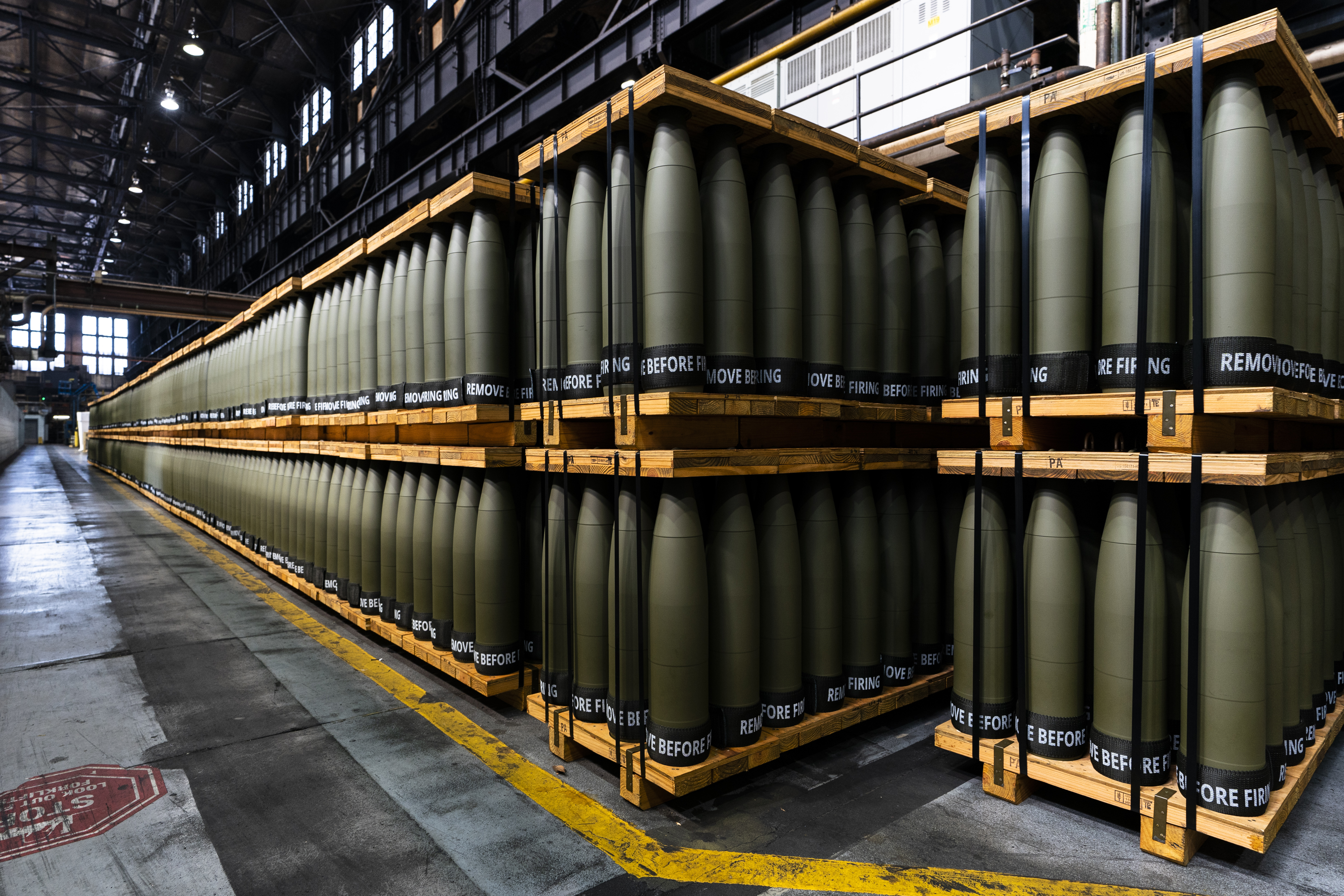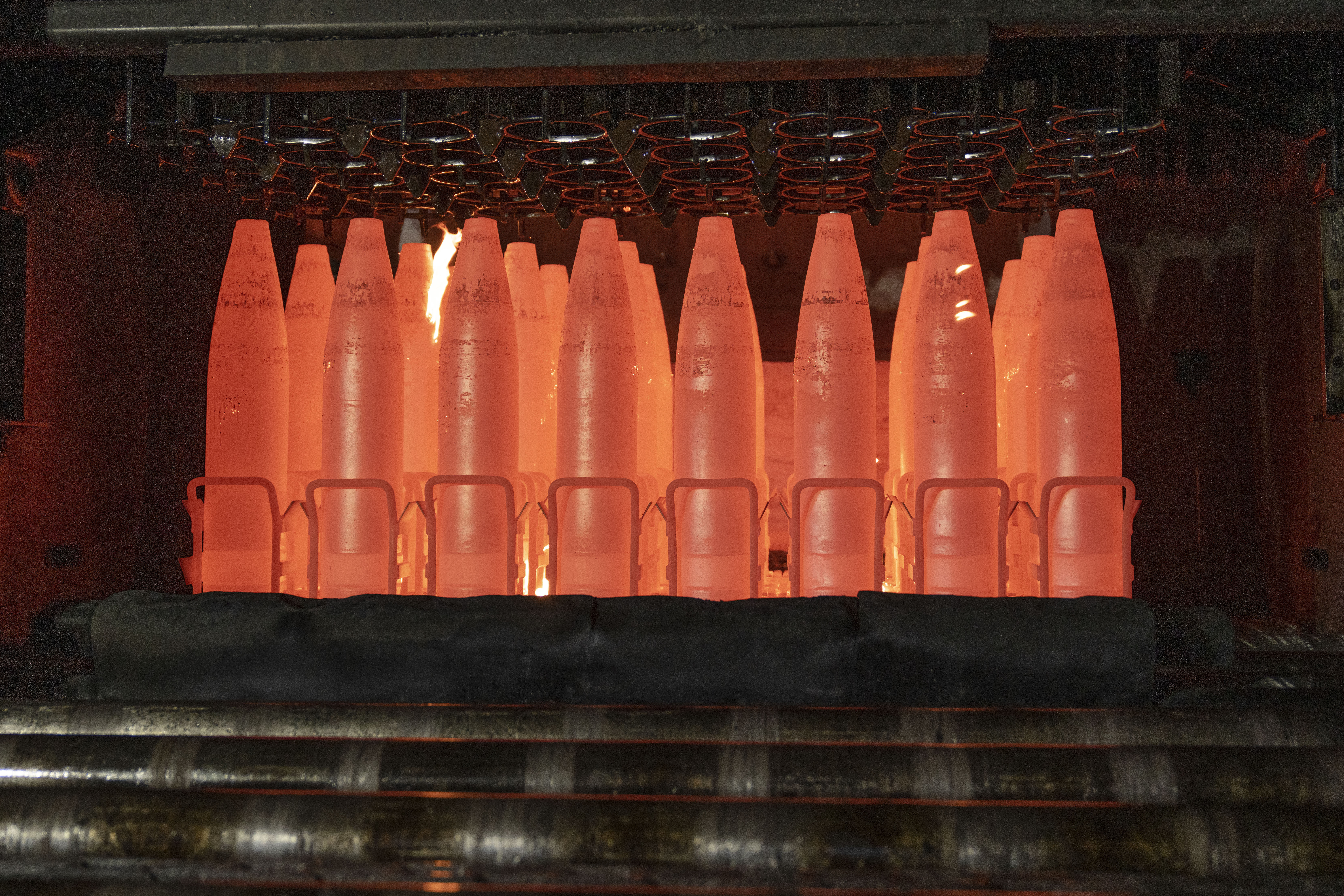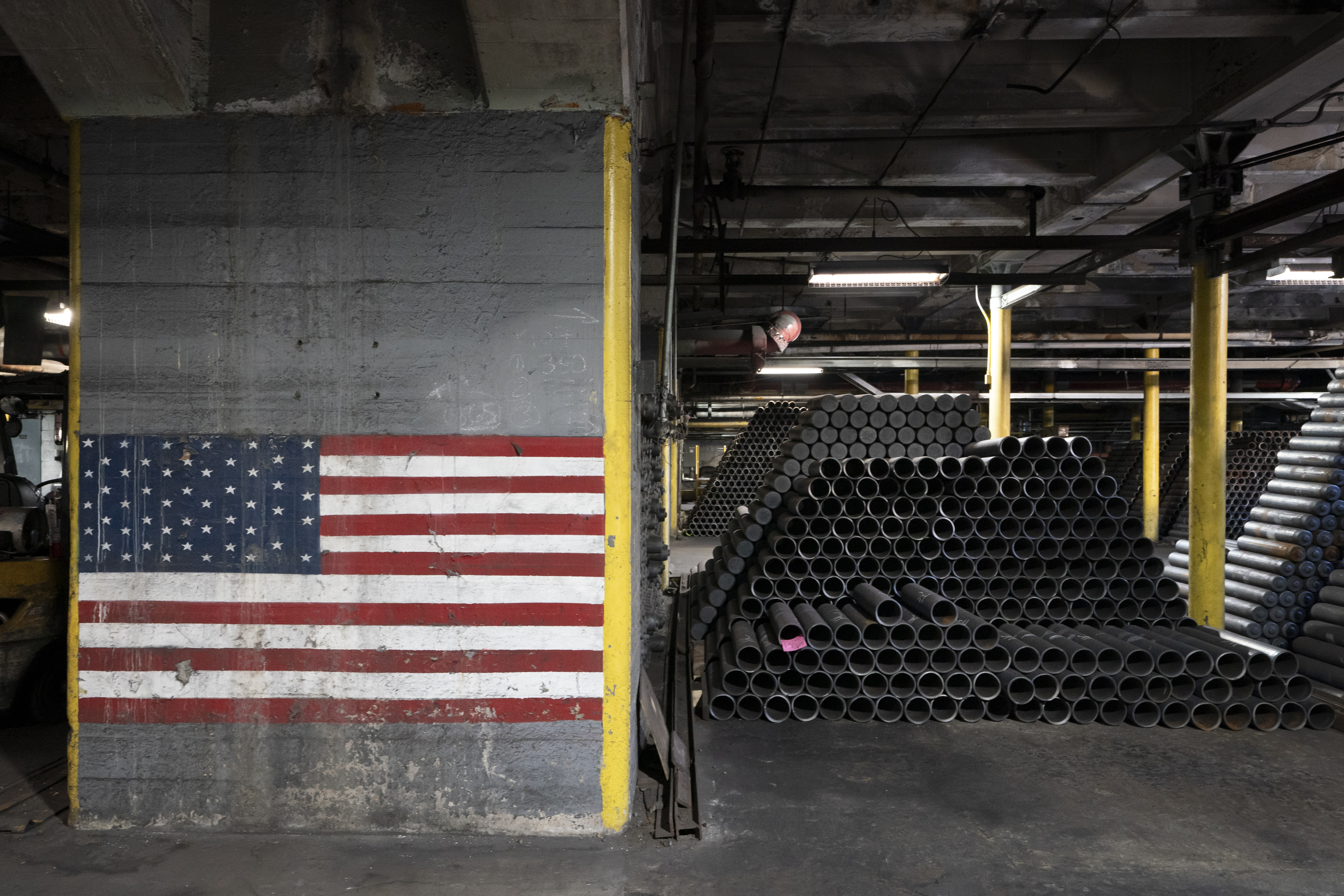The 155mm howitzer shell is one of the most requested artillery ammunition of the war in Ukraine. The United States has already sent more than 1.5 million rounds to Ukraine, but kyiv is still looking for more.
A look at why this particular munition is so commonly used, and why it has been so critical to the war in Ukraine.
Essentially, the 155mm cartridge is a very big bullet It is made up of four parts: the detonating fuse, the projectile, the propellant and the primer.
Each round is about 2 feet (60 centimeters) long, weighs about 100 pounds (45 kilograms), and is 155mm, or 6.1 inches, in diameter. They are used in howitzer systems, which are towed big guns who are identified by range of firing angle to which its barrels can be set.

155mm shells can be configured in many ways: they can be packed with high-explosive material, use precision-guided systems, pierce armor, or produce high fragmentation.
Previous variants have included smoke rounds to obscure troop movement and illumination rounds to expose an enemy’s position.
“The 155mm cartridge and the similar Soviet-era 152mm cartridge are so popular because they provide a good balance between range and warhead size,” said Ryan Brobst, a research analyst at the Defense Foundation for the Democracies. “If you have too small a projectile, it won’t do enough damage and it will go that far. If you have a larger projectile, you can’t necessarily shoot it as far. This is the most common middle ground, and that is why it is used so widely.
The French first developed the 155mm cartridge to respond to the extensive trench warfare of the First World War, and early versions included gas shellssaid Keri Pleasant, a historian with the Army’s Joint Munitions Command, in a statement to The Associated Press.

As World War I continued, the 155mm gun became the standard. most common artillery piece used by the Alliessaid Pleasant, and the Army of the USA he later adopted it as his standard heavy field artillery piece.
The US Army fielded its own version, the M1, for World War II. After the war, the new alliance of the NATO it adopted the 155mm as its artillery standard.
In the Korean war, the round had been modified again, with a cluster munition variant. “The round contained 88 submunitions, which were dispersed over a wide area to destroy vehicles, equipment, and personnel,” Pleasant said.
Shell fires can attack targets up to 15 to 20 miles (24 to 32 kilometers) awaydepending on the type of round and firing system used, making them highly valued by ground forces for taking out enemy targets from a protected distance.

“The adversaries don’t have much warning that it’s coming. And it’s harder to hide from incoming rounds arcing from the top, making it highly lethal,” Brobst said.
In Ukraine, 155mm shells are fired at a rate of 6,000 to 8,000 per daysaid Ukrainian parliamentarian Oleksandra Ustinova, who sits on Ukraine’s wartime oversight committee. They are dwarfed by the approximately 40,000 shells of the Russian variant fired at them, she told reporters at a recent event in Washington sponsored by the German Marshall Fund.
He Pentagon it had previously said how many rounds it was providing in each of the biweekly security assistance packages to keep arms and ammunition flowing into Ukraine. But he stopped specifying the number of 155mm cartridges shipped in each package in February, citing operational security.
Yet in its overall tally of assistance provided to Ukraine since Russia invaded in February 2022, the Pentagon says it has sent more than 160 155mm rounds, more than 1.5 million 155mm rounds, more than 6,500 precision-guided 155mm rounds and more than 14,000 155mm Remote Anti-Armour Mine (RAAM) systems, essentially a 155mm shell filled with four ground-scattering mines and they can take out a Russian tank if it runs over them.

Other countries have also provided howitzers, but kyiv has continually asked for more. Starting last year, Ukrainian officials they requested up to 1,000 howitzer systems to push back Russian forces.
As Ukraine prepares for an intense counteroffensive this spring, it will likely need to fire between 7,000 and 9,000 155mm rounds a day, said Yehor Cherniev, a member of Ukraine’s parliament who spoke to reporters at the German Marshall Fund event.
In recent months, the Biden administration has been using presidential reduction authority to ship ammunition directly from US military stockpiles to Ukraine, rather than having to wait and buy rounds from defense companies, so they can arrive in time for the anticipated Ukrainian counteroffensive.
The United States has also been training Ukrainian troops in Germany on how to best use 155mm cartridges in combined arms tactics, coordinating attacks with target information provided by forward troops and other armored systems to maximize damage and reduce the number of rounds needed to eliminate a target.
(With information from AP)
Keep reading:

